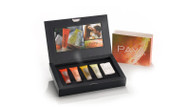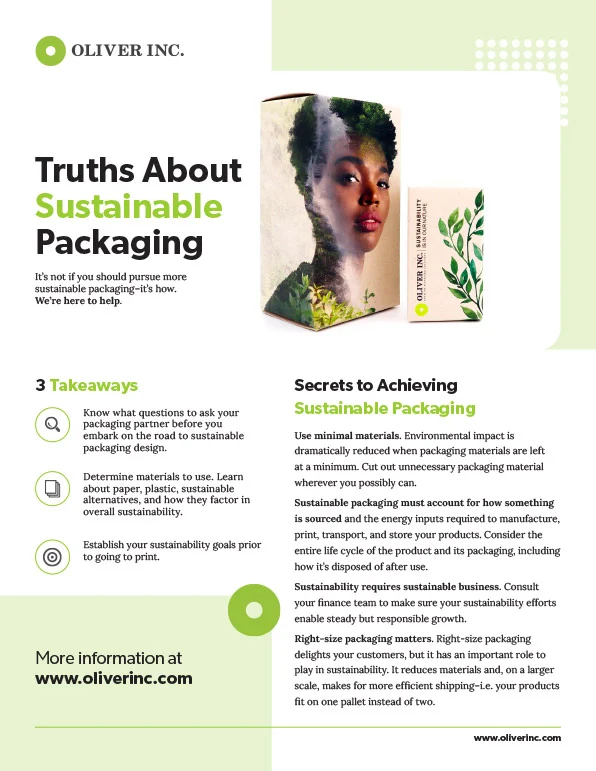Trendy Packaging Ideas for Your Personal Care Products
Posted by Oliver Inc. on 9th Jun 2022
Consumer habits are shifting and industry leaders need to respond to these trends, thinking deeper than the substrate level. Getting an edge in personal care products takes more than a few flashy visual designs on packaging.
Private in nature and used in bathing, grooming, and beautification, personal care products require packaging that is both well suited for self-care at home and aligned with a growing number of environmentally conscious consumers.
Read on to learn some trendy packaging principles for your personal care products.
What Consumers Want in Personal Care Product Packaging
If your brand focuses exclusively on what consumers want in personal care products but gives little attention to the kinds of packaging consumers desire, you’ll likely experience a loss in market share.
Here’s what you can do instead:
Eco-Friendly Packaging for Personal Care Products
Put simply, consumers are willing to pay premium prices for sustainable packaging, a majority saying sustainability is a factor in their selection process. This includes looking for materials that contain recycled content.
In addition to recycled materials, sustainable tree-free alternatives are available, including hemp, cotton, sugarcane bagasse, and casein film.
If you’re going to utilize cardboard or paperboard, collaborate with a manufacturer that sources timber from environmentally responsible forests. If they’re truly green manufacturers, they’ll be certified by the nonprofit Forest Stewardship Council (FSC), Sustainable Forest Initiative (SFI), or Programme for the Endorsement of Forest Certification (PEFC).
Furthermore, consumers are perusing personal care products for messaging about the sustainability of its packaging. Consider displaying “Derived from post-consumer recycled paper” or “Sourced from responsibly managed forests” on labels to highlight the sustainability of your packaging materials.
Size matters, as well. Consumers notice whether your brand abides by right-size packaging principles or not. Right-size packaging means you use only as much material as necessary to preserve and protect personal care products, avoiding gratuitous air pockets and superfluous layers of paper or plastic.
While additional packaging can contribute to a more memorable unboxing experience, more environmentally conscious consumers will take note of excessive materials. So use packaging materials judiciously.
Rethinking Anti-Counterfeiting & Difficult-to-Open Packaging
As consumers have shifted toward buying more personal care products online, some brands are reconsidering the need for hard shells and other forms of anti-counterfeiting packaging.
Given the intimate nature of these products, consumers want precise matches and will return whatever doesn’t quite work. By keeping in mind the reality consumers will often need to return products, it’s smart to make the repackaging process a little easier. This includes avoiding packaging structures that are counterintuitive or difficult to close.
Various anti-counterfeiting packaging is still quite popular to offset the rise in the selling of illegitimate products online. However, your brand also needs to strike a balance with lifestyle changes toward more self-care in the comforts of consumers’ homes.
Growth in Popularity of Doing Self-Care at Home
Over the past two years, people have needed to reduce travel around town and minimize visits to stores, salons, and spas, thus increasing the number of self-care activities done at home. To meet this lifestyle change, personal care brands need to seriously reconsider how home-friendly their packaging is.
Can it be easily stored on bedroom or bathroom shelves? Does it have high reuse capabilities?
Although these packaging trends are bringing changes to the personal care product industry, one aspect stays consistent: folding cartons.
What Does This Mean for Folding Cartons?
Use of folding cartons remains strong as brand owners seek to minimize secondary packaging in health and beauty products—in the name of sustainability—while more are shifting away from plastics toward paperboard.
For some personal care brands, almost all of their products are packaged inside of folding cartons. In part, this is to make important regulatory information easily visible to consumers, such as ingredients, instructions, and related warnings. Folding cartons also make for easy stacking on shelves or during shipment.
While some brands are reducing secondary packaging in personal care products, most aren’t fully moving away from folding cartons because many personal care products just need to be boxed—among other benefits.
Again, if you’re going to take advantage of folding cartons, be certain they’re derived from renewal substrates or sustainably managed forests. This ensures your commitment to sustainability weaves throughout your entire operation.
So, as you survey packaging trends in 2022, focus on the growth in popularity of self-care at home, rethink difficult-to-open packaging, and find ways to further embrace eco-friendly principles in your personal care product packaging. It will go a long way in helping to generate more brand affinity while leaving a positive environmental impact.






